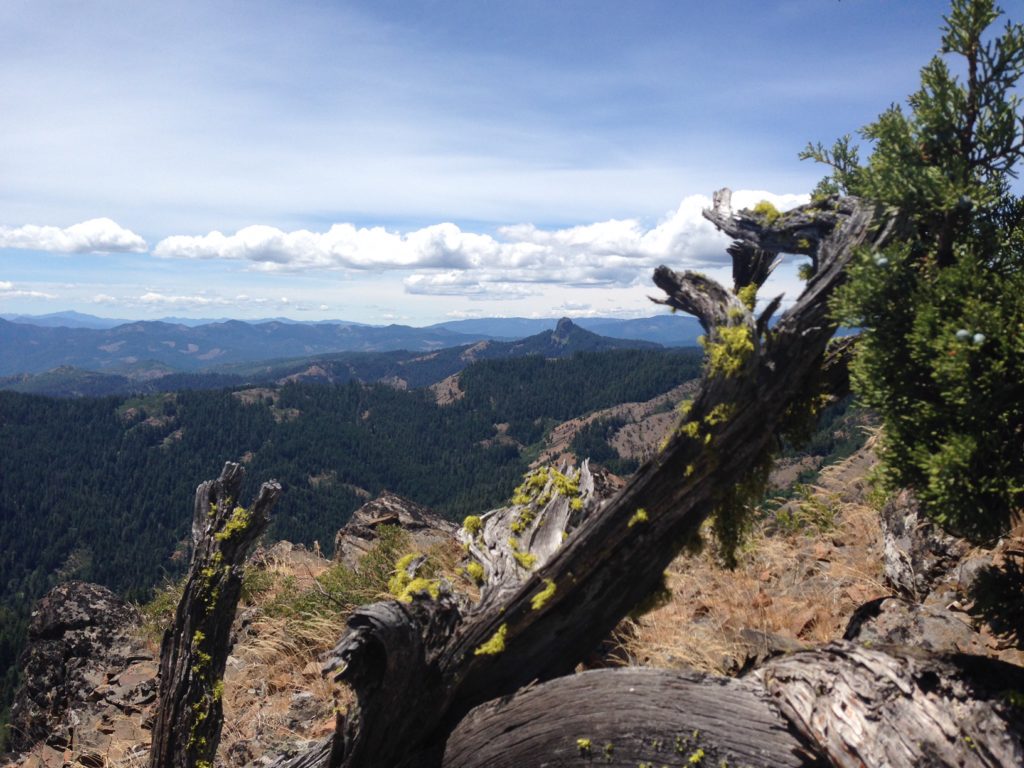Here’s my response to a Bend Bulletin editorial signing on to Interior Secretary Zinke’s leaked memo recommending that Cascade-Siskiyou National Monument be shrunk. You can read the Bulletin’s editorial here.
Thank you for your recent editorial “Cascade-Siskiyou should be shrunk” (September 20, 2017), which concludes with these sentences: “Unlike his predecessors, Zinke clearly sees the value of keeping public land open to the public and assuring that earlier promises such as those given when the O&C Lands were set aside in 1937 be honored. It’s difficult to argue with either.”
I deeply appreciate our American right to free speech and this opportunity to respectfully argue with both statements.
- Public lands, including the Cascade-Siskiyou National Monument (CSNM), are, and will remain, open to the public. The CSNM proclamation and expansion simply changes the designation of these public lands. In fact, these lands are more open to more people than when they were managed primarily for timber production. There are roads throughout the Monument. Existing hiking trails have been improved and new trails constructed. Hunting has improved due to BLM management for mule deer winter range. Tribal cultural sites are better protected and more accessible. Private property owners’ rights of way are explicitly preserved. The expansion proclamation includes the directive to plan for mountain bike and snowmobile access. I could go on.
- Of course we can, and should, revisit land use decisions made eighty years ago. In 1937 we knew virtually nothing about biodiversity, ecosystems, population growth, human impacts on the environment, and climate change.
In 1937, “biodiversity” wasn’t even a word. Biodiversity wouldn’t be talked about until the 1980s. Ecology and Conservation Biology as disciplines within science were decades away. Aldo Leopold’s A Sand County Almanac, about the interrelationships of living and non-living beings and managing for the health of the land as a whole, ideas now widely accepted, wouldn’t be published until 1949.
In 1937, Oregon’s population was 1,025,000 and California’s was 6,300,000. In 2016, Oregon’s population was estimated at 4,028,977 and California’s at 39,500,000. That’s phenomenal growth. Along with that growth comes dramatically increased pressure on the land.
In 1937, automobile ownership per capita was still low. People who did have cars didn’t drive into the backcountry lightly. Cell phones, plastic water bottles, GPS, and the internet were decades in the future.
In 1937, we didn’t have any inkling that our climate would change, and that the CSNM’s biodiversity would be a crucial sanctuary for species threatened by extinction.
There are approximately 2.5 million acres of O&C Lands in Oregon. The Cascade-Siskiyou National Monument contains about 40,000 acres of O&C land, and much of that 40,000 isn’t actually timber-producing for various reasons. At most, that’s 1.6% of O&C taken out of timber production, hardly significant in the grand scheme of things. This debate isn’t about timber production. It’s about values.
The Cascade-Siskiyou National Monument sits at the confluence of three mountain ranges. One of these ranges, the Siskiyou Mountains, is an unusual east-west range which forms a high-elevation land bridge between the Klamath and Cascade Mountains. This bridge has allowed plant and animal species to travel back and forth for hundreds of thousands of years. As a result, plant species diversity in the CSNM is incredibly high. High plant diversity leads in turn to high diversity of bird and insect species. Diversity is necessary for healthy life on Earth to persist and evolve. We imperil our survival as a species when we destroy vital habitat for ourselves and our non-human relatives and neighbors.
We knew none of this in 1937.
The Cascade-Siskiyou National Monument has been studied up one side and down the other since the 1980s, when the concept of biodiversity first emerged. There are millions of acres of public land better suited for timber production, grazing, and OHV riding. Let’s maintain the Cascade-Siskiyou National Monument’s bountiful diversity of plants and animals as best we can, given the realities of 2017.


A very clear and cogent argument for the sane and responsible management of public lands. Thank you.
Tore ’em apart.